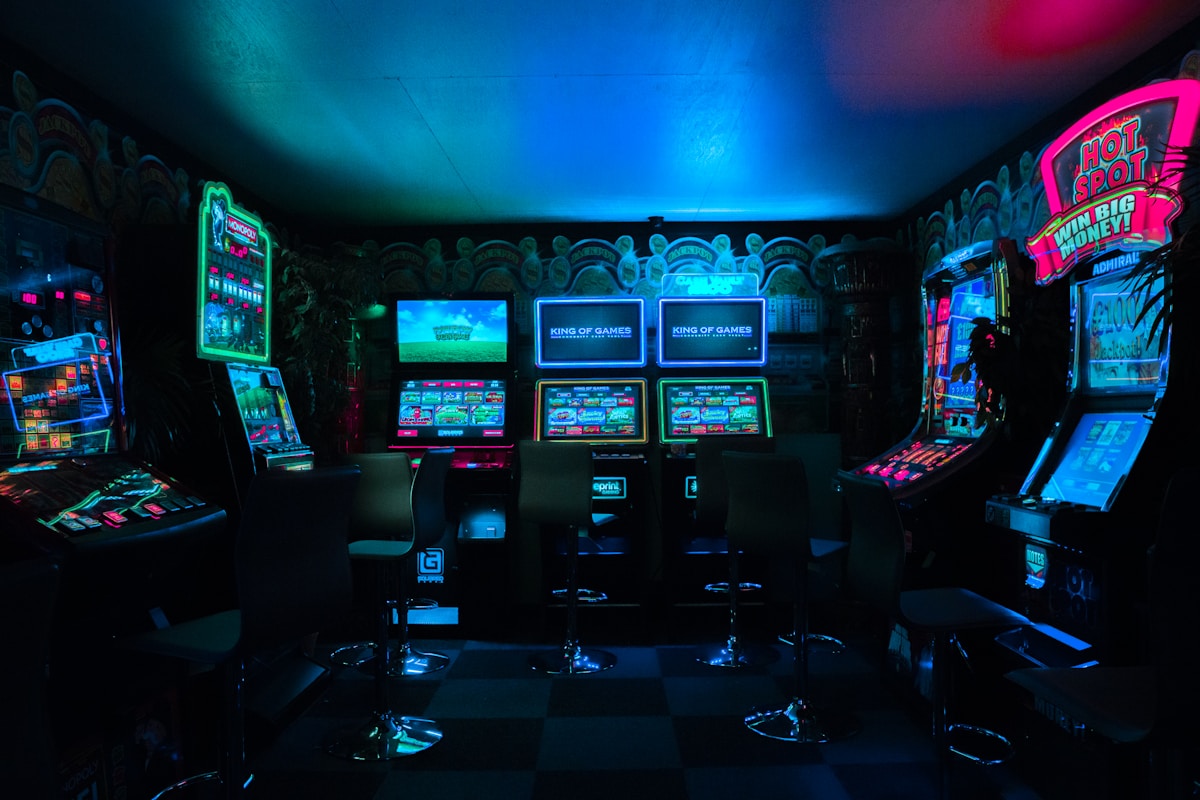Rez Infinite launched in October 2016 to critical acclaim for its reimagining of the original 2001 rail shooter classic. Almost a decade later, in 2025, the game hasn’t just survived – it has become a permanent fixture in the conversation about what gaming can achieve as an art form. When a game released in 2016 still stands as the gold standard for what its genre can accomplish, something profound is happening. Tetsuya Mizuguchi’s vision of synesthetic gaming – where music, visuals, and gameplay create a unified sensory experience – has aged not just well, but impossibly well. In an industry obsessed with pushing processing power and graphical fidelity, Rez Infinite proves that artistic vision and creative ambition matter infinitely more.
The Original Rez: A Forgotten Classic Reborn
To understand why Rez Infinite matters in 2025, you need to understand the original Rez, released in 2001 for Dreamcast and 2002 for PlayStation 2. The game was a commercial failure – neither system sold significant copies – but it became a cult classic among those who experienced it. Rez was a rail shooter where you guided an avatar through wireframe cyberspace, shooting down enemies that synchronized with an electronic music score. The entire game was designed around creating synesthesia: the sensation of seeing music, experiencing sounds visually, and feeling gameplay as rhythm.
For nearly 15 years after the PS2 version’s release, Rez existed in gaming memory as a beautiful ghost story. People talked about it. Emulation communities preserved it. But the original was inaccessible to new players. Then, in 2015, Tetsuya Mizuguchi announced that he was resurrecting Rez with Rez Infinite – not as a remake, but as an expansion that would add new VR content while preserving the original experience.
2016: VR Finally Finds Its Artistic Soul
When Rez Infinite launched in 2016 for PlayStation VR, it arrived at a critical moment in VR history. The Oculus Rift and HTC Vive had just launched. PlayStation VR was entering the market. Everyone was obsessed with motion controls, roomscale tracking, and arcade-style entertainment experiences. And then Rez Infinite showed up to remind everyone that VR could be artistic, meditative, and genuinely transformative.
The game shipped with all five original zones (the classic Rez experience) plus Area X, a completely new VR-exclusive environment built from scratch in Unreal Engine 4. Area X abandoned the on-rails gameplay of the original and let players free-fly through a spectacular three-dimensional cyberspace environment, shooting enemies and absorbing music with complete spatial freedom. Reviewers called it transcendent. Players described it as spiritual. For a moment, VR wasn’t about novelty – it was about genuine artistic expression.

Why Rez Infinite Never Needed to Age
Here’s the secret to why Rez Infinite has remained relevant for nearly a decade while most VR experiences from 2016 feel dated: the game doesn’t rely on graphical horsepower. The original Rez deliberately used wireframe graphics inspired by the abstract paintings of Wassily Kandinsky. Rez Infinite built on that aesthetic rather than abandoning it. The visuals are geometric, minimalist, and timeless. They don’t date themselves with photorealism that becomes obviously outdated in five years.
More importantly, the core experience isn’t about technical achievement – it’s about synaesthetic design. Every beat of music corresponds to visual feedback. Enemy destruction creates harmonic intervals. Your shots are timed percussion. The entire game is a feedback loop between what you hear, what you see, and what you do. That design philosophy doesn’t age because it’s not dependent on processing power. A 2016 PC can run it just as well as a 2025 system. The experience is identical.
The Port Strategy: Expanding Without Diluting
What’s remarkable about Rez Infinite’s longevity is how the team handled ports. After the PS4/PSVR version, they brought it to PC (Steam), Google Daydream (later sunset), Oculus Quest, PlayStation 5 (with PSVR2 support), and multiple VR platforms. Each port maintained the exact same artistic vision. They didn’t create separate versions with compromised graphics. The game looked as good on Quest as it did on PS VR2 because the aesthetic was designed for versatility, not raw power.
By 2024, Enhance Games (Mizuguchi’s studio) decided to sunset the Google Daydream version, but the game remains available across most major VR platforms and PC. The decision to preserve and port the game across platforms rather than abandon it has created a situation where players in 2025 can still experience exactly what critics fell in love with in 2016.
A Game of the Decade That’s Somehow Getting Better
In 2019, gaming critics were naming Rez Infinite one of the games of the decade. In 2025, nearly a full decade after its release, the game is still being referenced as the gold standard for VR artistic experiences. That’s almost unprecedented. Most VR games from 2016 are footnotes. Rez Infinite is evergreen.
What’s even more remarkable is that new platforms and technology have actually enhanced the experience. PSVR2’s improved tracking and controllers make Area X even more immersive than it was in 2016. Meta Quest’s growing install base means more players can experience the game than ever before. The original artistic vision hasn’t changed, but the hardware supporting it has evolved in ways that make it more powerful, not less.
The Absence That Haunts Gaming
Here’s the tragedy baked into Rez Infinite’s legacy: this success didn’t spawn a sequel. Nine years after Rez Infinite’s release, there’s still no true Rez 2. The 2011 game Child of Eden was positioned as a spiritual successor, but it never captured the same magic. Mizuguchi moved on to other projects. And the game industry, obsessed with franchises and sequels, never greenlit a genuine follow-up to one of its most acclaimed artistic experiences.
That absence makes Rez Infinite’s continued relevance even more poignant. In 2025, it still stands as the definitive expression of Mizuguchi’s synesthetic vision because nothing has surpassed it. Not because imitators failed – there haven’t really been serious imitators. The game endures partly due to its excellence, and partly due to the lack of competition in its artistic space.
| Year | Event | Significance |
|---|---|---|
| 2001 | Original Rez (Dreamcast) | Critical success, commercial failure |
| 2002 | Rez (PlayStation 2) | Cult classic established |
| 2015 | Rez Infinite announced | Mizuguchi’s return to gaming announced |
| 2016 | Rez Infinite (PS4/PSVR) | Critical revolution for VR art |
| 2017 | Rez Infinite (PC/Steam) | PC audience gained access |
| 2019 | Games of the Decade recognition | Rez Infinite called defining game of 2010s |
| 2020 | Oculus Quest port | Wireless VR access expanded playerbase |
| 2023 | PlayStation 5 PSVR2 support | Next-gen VR capabilities unlocked |
| 2024 | Daydream sunset | Platform consolidation, focus on major VR systems |
| 2025 | 9-year anniversary | Still the gold standard for VR art |
FAQs
When was the original Rez released?
The original Rez released in October 2001 for Sega Dreamcast in Japan, followed by a 2002 PlayStation 2 release internationally.
When did Rez Infinite launch?
Rez Infinite launched in October 2016 for PlayStation 4 with PlayStation VR support. It has since been ported to multiple platforms including PC, Quest, and PS5 with PSVR2.
What makes Rez Infinite special?
Rez Infinite creates synesthesia – a unified sensory experience where gameplay, music, and visuals are completely synchronized. Area X, the VR-exclusive zone, lets players free-fly through a three-dimensional space while experiencing music and combat as one unified phenomenon.
Is Area X worth experiencing?
Area X is universally considered the artistic peak of the game. Players describe it as transformative and recommend experiencing it in VR if possible.
What platforms can I play Rez Infinite on now?
Rez Infinite is available on PS4 (PSVR), PS5 (PSVR2), PC (Steam), Meta Quest, Oculus Rift, and other SteamVR headsets. The Google Daydream version was sunset on November 18, 2024.
How long is Rez Infinite?
The original five zones take approximately 30-45 minutes to complete. Area X adds another 15-20 minutes of unique content. Most playthroughs last around an hour total.
Why hasn’t there been a Rez Infinite 2?
No official sequel has been developed, though Tetsuya Mizuguchi has worked on other projects since Rez Infinite’s release. Area X was described by some as feeling like a proof-of-concept for a VR-only sequel, but nothing has materialized.
Will Rez Infinite continue receiving support?
Enhance Games continues to maintain the game across platforms, but significant new content updates haven’t been released since launch. The focus appears to be on preserving the game across evolving VR hardware.
Conclusion
Rez Infinite’s endurance nearly a decade after release stands as a powerful testament to what happens when artistic vision triumphs over technological novelty. In an industry obsessed with cutting-edge graphics and processing power, Rez Infinite proves that thoughtful design, coherent artistic vision, and genuine creative ambition matter infinitely more. The game’s wireframe aesthetic hasn’t aged because it was never meant to look like “reality” – it was meant to visualize music and sensation.
For a 2016 VR game to still be the gold standard for artistic VR experiences in 2025 is remarkable. That Rez Infinite exists alongside games with orders of magnitude greater technical achievement, yet remains superior in artistic expression, reveals something essential about what games can be. Tetsuya Mizuguchi created something that transcends technology. That’s why Rez Infinite will likely still be relevant in another decade.
